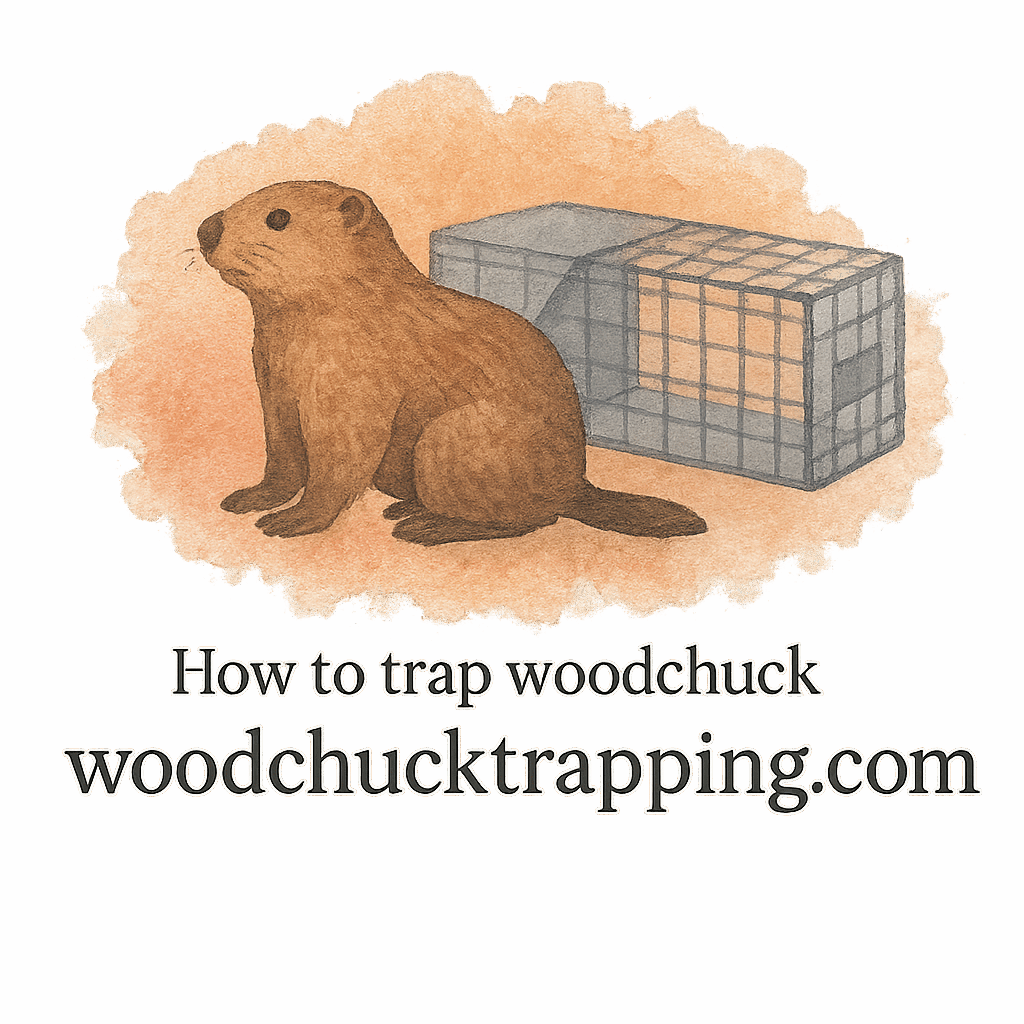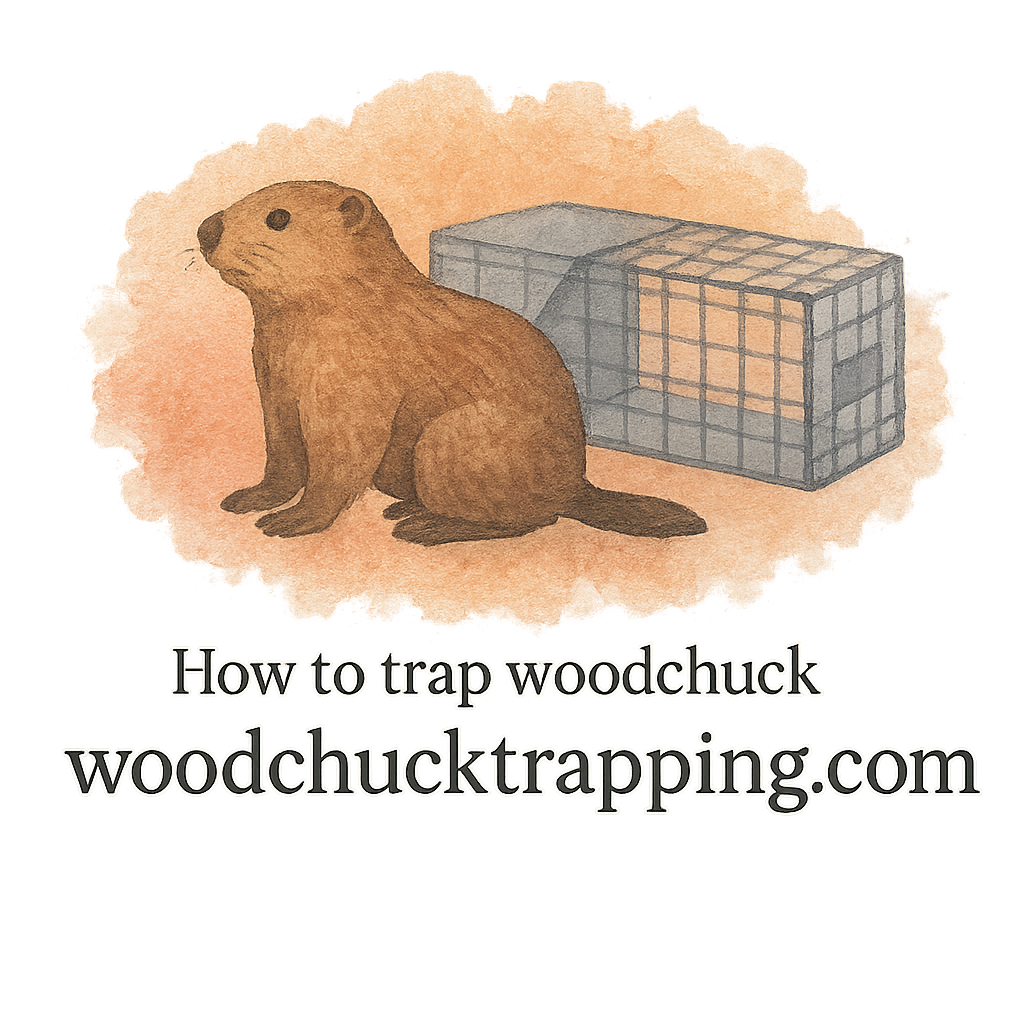Introduction
If you’ve ever looked out your window and spotted a chunky woodchuck chewing through your garden, you know the frustration. But here’s the thing—while it’s tempting to act fast, it’s just as important to act ethically. Trapping woodchucks doesn’t have to mean cruelty or chaos. In fact, with the right techniques, you can protect your property while respecting the animal and the environment. That’s exactly what we’ll explore: 8 ethical approaches to woodchuck trapping techniques that strike a balance between problem-solving and compassion.
Why Ethical Woodchuck Trapping Matters
The Role of Humane Practices
Ethical trapping isn’t about simply catching an animal—it’s about doing so in a way that minimizes harm and stress. Humane methods keep both the woodchuck and the trapper safe while maintaining ecological balance.
Balancing Wildlife and Property Protection
Woodchucks are a natural part of the ecosystem, but when their burrows threaten foundations or gardens, conflict arises. Ethical trapping ensures you protect your property without disregarding the animal’s well-being.
Understanding Woodchuck Behavior Before Trapping
Identifying Burrows and Habits
Woodchucks love digging extensive burrows. Recognizing these tunnel systems is the first step in any effective and ethical trapping plan. Look for fresh dirt mounds and gnawed plants as telltale signs.
Recognizing Signs of Infestation
If you’re unsure whether you have a full-blown infestation, watch for patterns: repeated plant damage, multiple entry holes, or droppings near gardens. Catching these early helps you plan ahead without rushing into harsh measures.
Approach 1: Humane Trapping Methods
Choosing the Right Compact Traps
A humane trap starts with the right design. Compact traps reduce injury risks and keep the woodchuck calm in confined spaces. They’re especially useful if you’re working in a small yard.
Using Gloves and Proper Handling
Always wear gloves when setting or checking traps. Not only does this protect you from bites and scratches, but it also prevents transferring human scent, which can scare off woodchucks. Safe handling is a cornerstone of ethical trapping.

Approach 2: Safe Baiting and Luring
Best Practices for Scent Bait
Effective baiting is an art. Using scent bait and fresh produce can draw woodchucks without overwhelming them. Overbaiting may cause panic or reduce the trap’s efficiency.
Ethical Use of Lure in Small Yards
When space is tight, you’ll need to be smart about baiting and luring. Too much lure in a minimal-space environment might attract non-target animals. Ethical use means being precise, not excessive.
Approach 3: Legal and Safety Considerations
Following State Laws and Regulations
Before setting a trap, always review laws and safety guidelines. Every state has unique rules about trapping, relocation, and even bait types. Ignoring them could cost you fines—or worse.
Ensuring Safety for People and Pets
Ethical trapping extends beyond the woodchuck. Ensuring safety for your pets, kids, and neighbors is just as important. Keep traps out of high-traffic zones to avoid accidents.
Approach 4: Prevention Over Capture
Yard Protection Techniques
Wouldn’t it be easier to stop woodchucks from coming in the first place? Strong fences, buried wire mesh, and strategic landscaping can prevent yard damage before trapping even becomes necessary.
Minimizing Future Infestations
By following proven prevention methods, you reduce the need for constant trapping. Think of it as fixing the root cause, not just patching the problem.
Approach 5: Reducing Stress on Trapped Animals
Proper Trap Placement
Where you place a trap makes all the difference. Putting it directly at burrow entrances reduces chase and panic. This small detail is an ethical game-changer.
Monitoring Traps Frequently
Never leave a trap unchecked for long. Woodchucks caught for extended periods can experience fear, dehydration, or injury. Regular monitoring ensures humane practices are maintained.
Approach 6: Using Eco-Friendly Tools and Gear
Reviewing Trapping Equipment
Not all gear is created equal. Looking at trusted equipment reviews helps you choose traps and tools designed for humane, efficient use.
Choosing Sustainable Materials
Whenever possible, opt for trap gear that minimizes environmental impact. Eco-friendly traps and gear mean less waste and longer-lasting solutions.
Approach 7: Professional Guidance and Resources
When to Call a Trapping Expert
Sometimes the most ethical choice is admitting you need help. Trapping professionals understand trapping techniques that minimize harm and maximize efficiency.
Learning From Trapping Communities
Don’t underestimate the power of community wisdom. Online forums and resources like how-to-trap guides or trapping essentials can sharpen your skills.
Approach 8: Releasing and Relocating with Care
Humane Release Strategies
When relocating, timing is everything. Choose cool hours of the day, and avoid leaving the animal exposed. A humane trapped animal release should always minimize stress.
Relocation and Environmental Impact
Relocation isn’t just about dropping the woodchuck elsewhere. Consider its survival chances and potential impact on local ecosystems. Ethical trapping respects balance, not just removal.
Common Mistakes to Avoid in Woodchuck Trapping
Overbaiting or Misplacing Traps
Too much bait can attract the wrong animals, while poor placement makes traps ineffective. Keep it simple, strategic, and ethical.
Ignoring Local Wildlife Laws
Skipping over laws and safety rules is a mistake that could have serious consequences. Ethical trapping means doing your homework first.
Conclusion
Trapping woodchucks doesn’t have to feel like a battle between you and nature. By using these 8 ethical approaches, you can protect your property while ensuring you’re treating wildlife with respect. From humane traps to eco-friendly tools and thoughtful relocation, every step matters. Remember, the goal isn’t just catching a woodchuck—it’s doing it the right way.
FAQs
1. What’s the most humane way to trap a woodchuck?
Using compact traps with proper placement near burrows is the most humane option.
2. Can I legally relocate a trapped woodchuck?
It depends on your state. Always check laws and safety before relocating.
3. What bait works best for woodchucks?
Fresh vegetables and scent bait are effective and safe.
4. How do I prevent woodchucks from returning?
Strong fencing and yard damage prevention methods are the best long-term strategies.
5. How often should I check woodchuck traps?
Check them at least once or twice daily to ensure humane treatment.
6. What gear do I need for safe trapping?
Good trap gear, gloves, and monitoring tools are essential.
7. Is it better to hire a professional trapper?
Yes, if you’re unsure about trapping techniques, calling an expert ensures safe and effective results.


